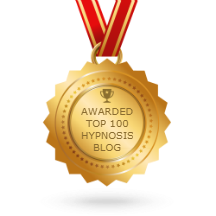By Herve Boisde
Albert Einstein once famously said "Imagination is more important than knowledge." Supposedly, we live in the Information Age and one of the buzz-words that people use is that this or that is "data-driven" and that seems to correlate to efficiency. But does society also value intuition?
Maybe more and more. As Einstein also once said to a colleague "When I examine myself and my methods of thought, I come close to the conclusion that the gift of imagination has meant more to me than any talent for absorbing absolute knowledge." Elaborating, he added, "All great achievements of science must start from intuitive knowledge. I believe in intuition and inspiration.... At times I feel certain I am right while not knowing the reason."
Geniuses like Einstein might be naturally intuitive and also creative because they use their intuition in very productive ways. Intuition and creativity are closely linked, and while the Information Age has gotten us to where we are today, some are speculating that the next phase of civilization will depend on BIG creative ideas, high-concept thinking and looking at the big picture rather than just the details. After all, problems such as Climate Change, income inequality, limited resources with an ever-growing population were created, in part, by thinking from a past era. The solutions will come from a new way of thinking and seeing the world.
Another way of talking about this is to compare Linear Thinking versus Holistic Thinking. Linear Thinking refers to cause and effect and a rational, logical order to the way everything is connected. Analytical people tend to think in linear terms. More intuitive people tend to think more Holistically. The thoughts of a linear thinker tend to form a line (i.e. one thought leads to the next, then to the next, and so on). It is more ordered and organized if thoughts can have an linear formula. A non-linear or Holistic thinker might have thoughts that are more abstract or circular. In other words, a person who thinks holistically can jump around as if the thoughts are flowing across the middle of a circle rather that having to go across a line (A to B to C to D could instead be A to F to M to C). From a visual perspective the thinking become holistic because rather that move along a 2 dimensional line, the thoughts can move into a 3rd dimension across the plane of the circle.
Ok, so if creativity and intuition are almost the same thing, and abstract, creative thinking comes from less-analytical non-linear ideas, how do you train your mind to be more intuitive? Einstein said that all his breakthrough ideas came to him in the form of pictures or images in his mind, rather than words or math equations. He would then translate those images into language or math. That might explain why he thought that all scientists were artists as well.
Einstein first described his intuitive thought processes at a physics conference in Kyoto in 1922, when he indicated that he used images to solve his problems and found words later (Pais, 1982). Einstein explicated this bold idea at length to one scholar of creativity in 1959, telling Max Wertheimer that he never thought in logical symbols or mathematical equations, but in images, feelings, and even musical architectures (Wertheimer, 1959, 213-228).
In other interviews, he attributed his scientific insight and intuition mainly to music. "If I were not a physicist," he once said, "I would probably be a musician. I often think in music. I live my daydreams in music. I see my life in terms of music.... I get most joy in life out of music" (Calaprice, 2000, 155). His son, Hans, amplified what Einstein meant by recounting that "[w]henever he felt that he had come to the end of the road or into a difficult situation in his work, he would take refuge in music, and that would usually resolve all his difficulties" (quoted in Clark, 1971, 106). After playing piano, his sister Maja said, he would get up saying, "There, now I've got it" (quoted in Sayen, 1985, 26). Something in the music would guide his thoughts in new and creative directions.
It's also useful to note that the seat of imagination and intuition reside in the subconscious mind. The conscious mind is the logical, analytical part of your mind but when you get really absorbed into a task or project, you go into a kind of trance and your subconscious mind will get more involved. This is a natural and normal form of hypnosis. Anytime you notice that you are in the "zone" or time seems to go by very quickly you are actually having a hypnotic experience. We also, through no coincidence, tend to be more creative and inspired in these states of mind. Many books and articles have been written about tapping into "flow" or these phases of inspired creativity. What it boils down to is letting your logical, analytical conscious mind get out of the way and letting your intuition take over.
To further illustrate this notion that the best creative work happens when the rational, self-editing mind gets out of the way of the intuitive inclination — something Ray Bradbury articulated beautifully in a 1974 interview — Picasso offers an illustrative example. Despite being both a professional admirer and a personal friend of Matisse’s, he cites the painter’s notoriously methodical creative process as a betrayal of this notion that an artist should honor his or her initial creative intuition:
“Matisse does a drawing, then he recopies it. He recopies it five times, ten times, each time with cleaner lines. He is persuaded that the last one, the most spare, is the best, the purest, the definitive one; and yet, usually it’s the first. When it comes to drawing, nothing is better than the first sketch.”


